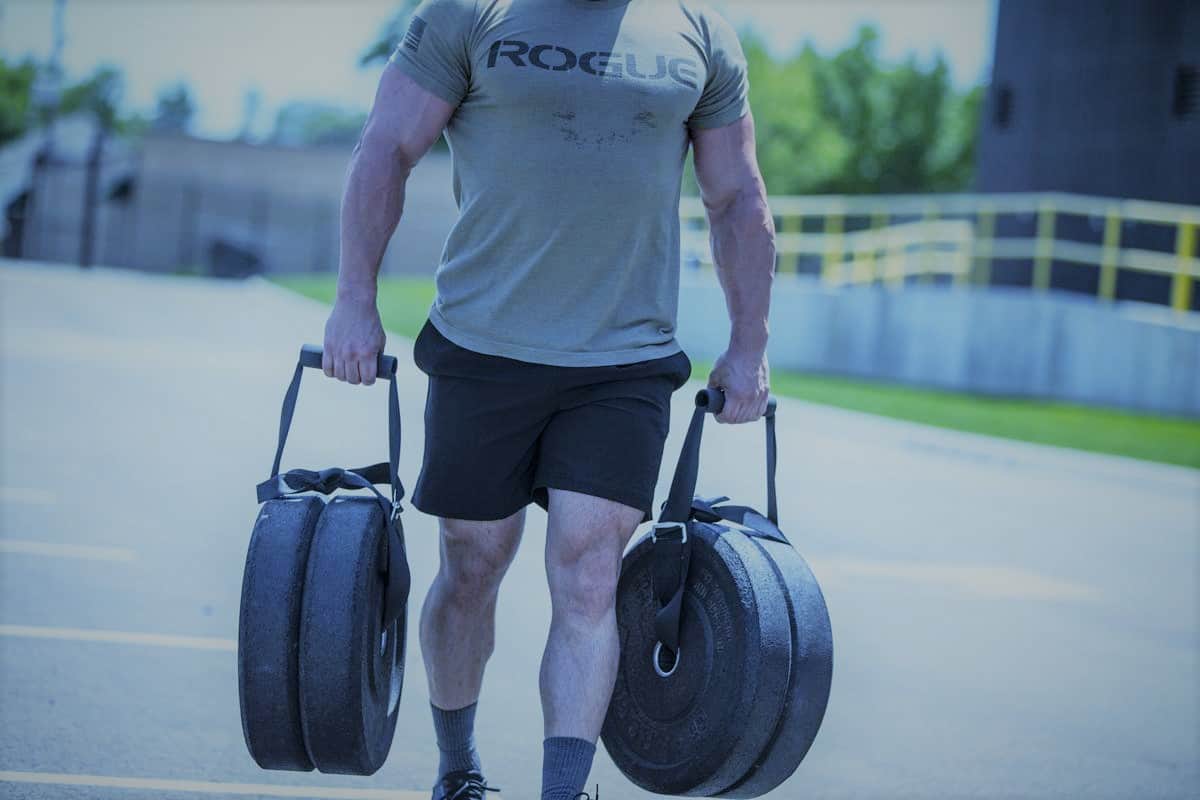You will find pull ups in many powerlifting programs. Pull ups are an easy and universal way to train the muscles of the back, as well as the stabilizers in the shoulders. They don’t replace rows (do both), but they’re still a great exercise.
What can you do to make pull ups more challenging and effective for powerlifting, especially if you’re already doing anywhere from 10 to 20 per set?
Add Weight, of Course!
This one’s obvious, but it might not be obvious on how to implement it at home. If you’re still in lockdown or unable to access a gym, chances are you’ve greased the groove a few dozen times and gotten to the point where you’re easily smashing past a dozen pull ups.
But after a while, doing that many gets kind of boring, and we powerlifters live and breathe by the rule of progressive overload.
The easiest way to effectively introduce progressive overload into the pull up is to start loading it with weight.
If you don’t have a dip belt, don’t worry. You don’t need to start holding dumbbells between your feet or squeezing weights between your thighs.
All you need is a good sling bag, backpack, or string bag. It can’t be too cheap, and you’ll want to test it out by stuffing it with something heavy first. Start with books, then move onto something heavier. Water bottles are good.
Weight plates, however, are risky. If your backpack came with some reading material, check how much weight it can handle. Mine can reportedly handle up to about 20kg, so to avoid pushing the fabric to its limit I’ve used 10-15kg in the form of smaller plates and a kettlebell. Once you’re running close to the limit of one bag, grab a second one.
Stop Loading Behind Yourself
If you can, load them in front of you. We have this strange notion that a good pull up works the back, so naturally you should wear your weight behind you.
Don’t.
The pull up and your muscles still obey the laws of gravity, which means you’re always going to try to be centered under the bar. The issue here is that your head is in the way, so your body has to angle itself in order to allow you to move your head back.
The mistake many people make, then, is to cross their legs behind him or get even more weight behind them.
All this does is serve to further exacerbate your body’s need to angle backwards to balance out and get centered under the bar. If you wear the weight in front of you, however, you can get nice and straight, and pull up much more efficiently.
I’ll repeat it for the people in the back. Stop crossing your legs behind you. Keep them straight an in front of you. You’ll easily add an extra 20%-50% more reps to your current record.
Stop Pulling for Reps
This one should be clear to you as well, but in your boredom it might be a rule you’ve ignored. Stop pulling for reps. If you can do more than a dozen pull ups, great. You don’t need to do more. There’s nothing wrong with doing more as a personal goal, of course. But if you’re powerlifting, you should be doing pull ups for two reasons: hypertrophy and strength.
Pull up strength is best trained in the same rep range as any other movement – sets of three or five, with increased resistance.
Pull up hypertrophy starts to take a turn for the worse after 12 to 15 reps, at which point you’re just doing them to try and get a higher number of pull ups. Which is fine. It’s pretty impressive to see someone do 25, 30, or even more pull ups. It won’t have much carryover to any of your lifting, though.
If you’re running out of weight to pull with (and remember to get creative here, it’s not hard to work up to 30-40kg with an assortment of bags and objects), you can always add resistance bands to the mix (tying them to something really heavy on the ground, and then to your waist or shoulder).
You Don’t Have to Clear the Bar (For Hypertrophy)
This one’s important as well. We all love a good pull up – strict form, with the chin clearly over the bar, maybe even the chest. It’s even better when you can do high pulls and get that bar to your nipples or stomach. But if you’re doing reps for the explicit purpose of muscle growth, don’t stop your set once you can’t clear the bar with your chin.
You should continue to do high pulls and chest-to-bar or chin-over-bar pull ups but continue pulling even after you’re starting to fatigue too much to complete the lift.
This is because the arguably most beneficial portion of the pull up is the eccentric into a full lats and biceps stretch, as we know that stretched muscle under load does more for hypertrophy than the contraction itself.
Even if we consider that the eccentric portion is just as useful as the concentric portion at worst, it may still be worth it to “cheat” by continuing your reps even after you can’t fully clear the bar, for hypertrophy reasons.
Because the top portion of the lift isn’t as important as the stretch and the initial pull itself (which is arguably the easiest portion of the lift, in direct contrast to most other exercises where the start to middle is the hardest portion), you can safely continue to do your powerlifting pull ups until your forehead barely touches the bar, and call the set there.
You don’t have to add them to your record if you’re a purist (like me), but you’ll probably get a bigger hypertrophy benefit out of moving up in weight, pulling up over the bar for the first few reps, and then doing “half reps” where you clear the bar with your nose or eyes, and instead focus on getting a big stretch at the bottom of each rep (without ever relaxing your shoulders.
The targeted muscles in the pull up are the lats, the biceps, middle traps, and the chest (EMG research indicates that the chest helps initiate the pull, but that doesn’t mean it’s a great chest builder). However, the primary targets in a pull up are the lats.
Strong lats are crucial for a heavy deadlift and being able to retract and hold your shoulder blades in position on the bench is an important skill for heavy bench pressing. While a row is equally invaluable, pull ups remain a paragon exercise and a staple in the training programs of countless big deadlifters.
Want to lift heavier and avoid injuries? 💪🔥
Download our FREE '5-Minute Warm-Up Routine for Maximum Lifting Performance' and get primed for every workout!
Click below to grab your copy now!👇
👉 Download the Free Guide




